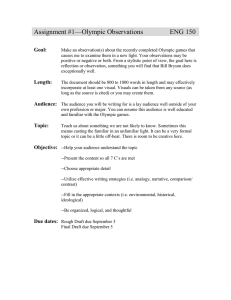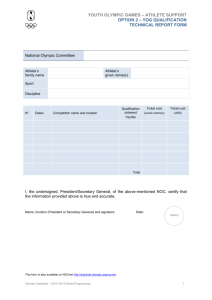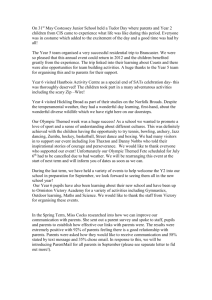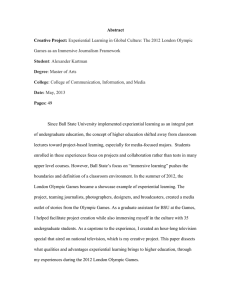ANCIENT YELLOW-CEDAR GROVES IN THE OLYMPIC MOUNTAINS, WASHINGTON
advertisement
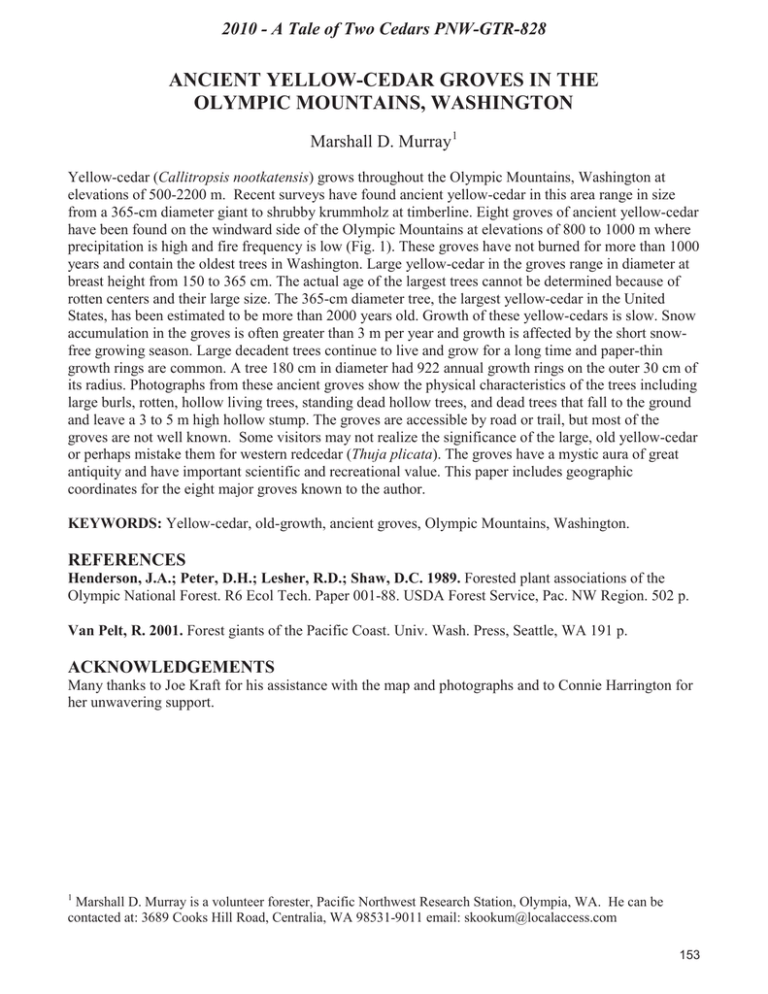
2010 - A Tale of Two Cedars PNW-GTR-828 ANCIENT YELLOW-CEDAR GROVES IN THE OLYMPIC MOUNTAINS, WASHINGTON Marshall D. Murray1 Yellow-cedar (Callitropsis nootkatensis) grows throughout the Olympic Mountains, Washington at elevations of 500-2200 m. Recent surveys have found ancient yellow-cedar in this area range in size from a 365-cm diameter giant to shrubby krummholz at timberline. Eight groves of ancient yellow-cedar have been found on the windward side of the Olympic Mountains at elevations of 800 to 1000 m where precipitation is high and fire frequency is low (Fig. 1). These groves have not burned for more than 1000 years and contain the oldest trees in Washington. Large yellow-cedar in the groves range in diameter at breast height from 150 to 365 cm. The actual age of the largest trees cannot be determined because of rotten centers and their large size. The 365-cm diameter tree, the largest yellow-cedar in the United States, has been estimated to be more than 2000 years old. Growth of these yellow-cedars is slow. Snow accumulation in the groves is often greater than 3 m per year and growth is affected by the short snowfree growing season. Large decadent trees continue to live and grow for a long time and paper-thin growth rings are common. A tree 180 cm in diameter had 922 annual growth rings on the outer 30 cm of its radius. Photographs from these ancient groves show the physical characteristics of the trees including large burls, rotten, hollow living trees, standing dead hollow trees, and dead trees that fall to the ground and leave a 3 to 5 m high hollow stump. The groves are accessible by road or trail, but most of the groves are not well known. Some visitors may not realize the significance of the large, old yellow-cedar or perhaps mistake them for western redcedar (Thuja plicata). The groves have a mystic aura of great antiquity and have important scientific and recreational value. This paper includes geographic coordinates for the eight major groves known to the author. KEYWORDS: Yellow-cedar, old-growth, ancient groves, Olympic Mountains, Washington. REFERENCES Henderson, J.A.; Peter, D.H.; Lesher, R.D.; Shaw, D.C. 1989. Forested plant associations of the Olympic National Forest. R6 Ecol Tech. Paper 001-88. USDA Forest Service, Pac. NW Region. 502 p. Van Pelt, R. 2001. Forest giants of the Pacific Coast. Univ. Wash. Press, Seattle, WA 191 p. ACKNOWLEDGEMENTS Many thanks to Joe Kraft for his assistance with the map and photographs and to Connie Harrington for her unwavering support. 1 Marshall D. Murray is a volunteer forester, Pacific Northwest Research Station, Olympia, WA. He can be contacted at: 3689 Cooks Hill Road, Centralia, WA 98531-9011 email: skookum@localaccess.com 153 Table 1 -- Locations of ancient yellow-cedar stands visited on the Olympic Peninsula, Washington. Site name Lat. (N) Pine Mountain, Olympic NP 3 - Lakes, Olympic NP Big Creek Meadows, Olympic NP 3 - Peaks, Olympic NF West Fork Humptulips River, Olympic NF Quinault Ridge, Olympic NF Matheny Ridge, Olympic NF Matheny Ponds, Olympic NF 47.946 47.604 47.602 47.492 47.479 47.475 47.579 47.564 154 Long. (W) 123.971 123.729 123.692 123.548 123.629 123.750 123.833 123.858 Elev. (m) 1000 970 800 960 820 910 880 850 3 - Lakes Pine Mountain Figure 1 -- Photographs of trees & locations of ancient yellow-cedar groves in the Olympic Mountains, WA. Big Creek Meadows Matheny Ridge 3 - Peaks Matheny Ponds Quinault Ridge W. Fork Humptulips R. M.D. Murray, 2010. Ancient yellow-cedar groves in the Olympic mountains, Washington. In: A tale of two cedars: International symposium on western redcedar and yellowcedar.C.A. Harrington Tech. Coord. Gen. Tech. Rep. PNW-GTR-828. Portland, OR: U.S. Department of Agriculture, Forest Service, Pacific Northwest Research Station. 177 p. 155
